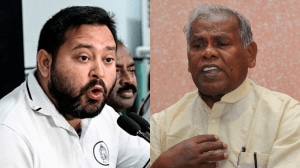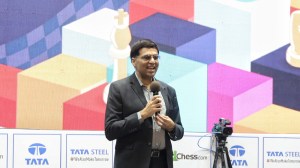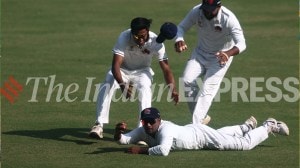Meteorologist warns India of impending draught
There is a real potential for monsoon to enter a mega-drought state with high frequency of severe droughts.

India, which has been fortunate to have largely stable monsoon for the last 140 years, may find the weather behaving erratically due to global warming with persistent drought in 60-70 years, a top meteorologist warned on Wednesday. The Government’s efforts to push up farm growth might require some reorientation laying emphasis on arid farming and development of flood and drought resistant crops, B N Goswami, Director of Indian Institute of Tropical Meteorology said.
There is a real potential for monsoon to enter a mega-drought state with high frequency of severe droughts, Goswami said, adding the melting of glaciers in Arctic would affect the Indian monsoon. Although average increase of temperature in the last 140 years was 0.7 degree Celsius, the rate of change in the recent years is “very sharp and high”.
Goswami said melting of Arctic and Greenland ice due to global warming would lead to rise in water level in North Atlantic Ocean. This will weaken ‘thermohaline’ (heat) circulation of Atlantic Ocean, lowering atmospheric temperature over Indian longitudes and resulting in weak monsoon in the Indian sub-continent.
He said the amount of rainfall in 10-15 cm range per day has increased in the last 50 years whereas the 5-10 cm range rainfall has decreased even though the average downpour has more or less remained the same.
Goswami said, although the overall rainfall remained same, increasing big events (more than 10-15 cm per day rainfall) are happening at the cost of smaller events, thereby leaving minimum scope for recharging of the ground water. This will later affect the agricultural production. Food production is more vulnerable to vagaries of monsoon today and with increasing population and stagnated food production, if monsoon goes to a mega drought regime, impact on society and economy will be tremendous,” he added.
He urged the agricultural scientists to work on solutions to face the mega drought in the coming few decades and improve the per capita availability of foodgrains which has already fallen drastically.
Although the temperature rise felt by India was almost same as that of the rest of the world, somehow quantum of rainfall remained same so far. However, the quantum of rainfall has not increased as expected by scientists due to global warming based on the conventional thinking and “this is a cause of concern,” he said. The rate of change of temperature over the 100 years has been larger than witnessed in the past one million years.
The levels of green house gases like carbon dioxide and methane in the atmosphere are also at higher levels unprecedented during past 650,000 years indicating a clear cut anthropogenic forcing influence,” the director said.
Indian policy makers should champion the cause to reduce the green house gas emissions and stop the mounting global warming in order to have stable monsoon, Goswami said.
Country’s 65 per cent of farming depends on monsoon while only 35 per cent depends on irrigation. “With conventional wisdom, global warming should lead to a strong monsoon as there will be more moisture in the atmosphere and stronger hydrological cycle. But the unconventional and a disastrous possibility indicates that global warming would lead to monsoon drought,” Goswami quoted.
Since 1993, global sea level has risen by 43 mm (1.7inches)— sixty per cent from expansion as ocean temperature rise and 40 per cent from melting glaciers.Warming in the Arctic has doubled from 19th to 21st century and from late 1960s to present, he said adding that also warmth from 1925 to 1950 in Arctic was not as widespread as recent global warmth.
These factors should not be ignored while modeling regional climate, Goswami added saying that currently the models are very poor due to inability of the global models to simulate the present day mean regional climate accurately. He also urged scientists to develop an alternative strategy which is required for more reliable estimate like taking regional climate model with high resolution that simulates the regional climate better when fed by the global model output at the boundaries.


- 01
- 02
- 03
- 04
- 05





























